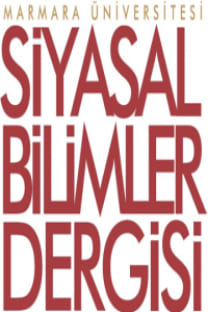Modi Hükümeti Döneminde Hindistan Dış Politikası
Modi Hükümeti kurulalı altı aydan biraz fazla olsa da Hindistan dış politikasındaki yönelimler belirginleşiyor. Yeni Hükümetin üç önceliği söz konusu: özellikle Pakistan’la ilişkisinde müfrit bir dış güvenlik politikası, Japonya, Çin ve Avrupa Birliği gibi potansiyel yatırımcılarla etkin ekonomik taahhütler ve Çin’in bölgedeki gücünü dengelemek adına ABD ve Japonya’yla daha yakın bir stratejik işbirliği. Aynı zamanda tarihsel ve jeopolitik sebeplerden ötürü Rusya ile yakın ilişkilerini korumayı da içeriyor. Zira “Act East” politikası çerçevesinde Güney Doğu Asya devletlerine yönelik etkin bir politika izlemesi ancak Batı Asya’ya yönelik taahhütlerini açık bir çerçevede geliştirmesine bağlı. Oysa taahhütlerin dili ve sembolleri daima içerideki dini sertlik yanlılarını cezbeden bir kültürel milliyetçilik çerçevesinde oluşuyor. Bu makale Modi Hükümeti’nin son altı aylık ikili ve çok taraflı dış politika taahhütlerini tahlil ederek yeni ortaya çıkan yönelimleri betimlemeyi ve çözümlemeyi amaçlamaktadır.
Anahtar Kelimeler:
Hindistan Dış Politikası, Narendra Modi, Act East, BJP, SAARC, BRICS, Modi Japonya’da, Modi ABD’de, Xi Jinping Hindistan’da, Dünya Ticaret Örgütü
India's Foreign Policy under Modi Government
Modi government is just over six month old but there are clear trends emerging in India’s foreign policy. Three priorities of the new government are: a hardliner policy on external security, especially, in dealings with Pakistan; active economic engagements with potential investors, such as, Japan, China and the European Union, and; a closer strategic cooperation with the USA and Japan to balance China in this region. It also maintains a closer relation with Russia due to historic and geopolitical reasons. While actively engaging with the South East Asian states under its ‘Act East’ policy, it has yet to evolve a clear framework for engagement with the West Asia.The language and symbols of engagements, however, are always rooted in the frame of cultural nationalism which panders to the religious hardliners domestically. This paper is an attempt to unravel and describe these emerging trends by analyzing Modi’s bilateral and multilateral engagements in the last six months.
Keywords:
India’s foreign policy, Narendra Modi, Act East, BJP, NDA, SAARC, BRICS, Modi in,
___
- arry, Ellen (2014) “Much at Stake as Xi Jinping, Chinese Leader, Visits India”, The New York Times, September 17.
- Bengali, Shashank; Richter, Paul (2014) “U.S. eager to forget about new Indian premier’s 2005 visa denial”, Los Angeles Times, September 25. http://www.latimes.com/world/asia/la-fg-us-india-modi- 20140925-story.html. Accessed on November 23, 2014.
- Bhadrakumar, M.K. (2014) “Modi’s BRICS moment”, Indian Punchline: Reflections on Foreign Affairs, available at http://blogs.rediff.com/mkbhadrakumar/2014/07/13/modis-brics-moment/. Accessed on 30 November, 2014.
- Bhadrakumar, M.K. (2014) Diplomacy, Aug 4. http://blogs.rediff.com/mkbhadrakumar/2014/08/04/modiswto-stance-annoys-us/ ). Accessed on November 15, 2014.
- “Brics development bank launached, first president to be from India”, Times of India, July 16, 2014. http://timesofindia.indiatimes.com/business/international-business/BRICS-Development-Banklaunched-first-president-to-be-from-India/articleshow/38440605.cms. Accessed on November 20, 2014.
- Chellaney, Brahma (2014) “China’s Borderline Belligerence”, Project Syndicate, September 8. Read more at http://www.project-syndicate.org/commentary/brahma-chellaney-criticizes-india-for-allowingchina-to-dominate-the-bilateral-relationship#TjhGsPECUJE7fc0S.99
- Cohen, Stephen P. (2013) “The World View of India’s Strategic Elite”, in Kanti P. Bajpai and Harsha V. Pant, India’s Foreign Policy, Oxford University Press.
- Das, Rup Narayan (2014) “China President Xi’s India Visit: The economics behind setting up two industrial parks in India”, The Economic Times, September 19.
- Garver, John W. (2002) Protracted Contest: Sino-Indian Rivalry in the Twentieth Century, University of Washington Press.
- Ghosh, Amitav (2014) “Erdogan and Modi: Parallel Journeys?”, The Times of India, November 30.
- “Indian media: PM Modi’s Japan visit”, http://www.bbc.com/news/world-asia-india-28978274. Accessed on 24 November, 2014.
- Kirk, Jason A. (2010) “The Evolution of India’s Nuclear Policies” in Sumit Ganguly (ed.), India’s Foreign Policy: Retrospect and Prospect, Oxford University Press.
- Kochler, Hans (1982) The Principles of Non-alignment: The Non-aligned Countries in the Eighties: Results and Perspectives, International Progress Organization.
- Modi, Narendra and Obama, Barak (2014) “A renewed U.S.-India Partnership for the 21st Centruy”, The Washington Post, September 30. http://www.washingtonpost.com/opinions/narendra-modi-andbarack-obama-a-us-india-partnership-for-the-21st-century/2014/09/29/dac66812-4824-11e4- 891d-713f052086a0_story.html. Accessed on 30 November, 2014.
- Mohan, C. Raja (2013) “Beyond Non-alignment”, in Kanti P. Bajpai and Harsha V. Pant, India’s Foreign Policy, Oxford University Press, pp. 27-50.
- Mohan, C. Raja (2014) “Not so easy to Act East”, The Indian Express, November 22, 2014. http:// indianexpress.com/article/opinion/columns/not-so-easy-to-act-east/. Accessed on 24 November, 2014.
- Pandit, Rajat (2014) “US pips Russia as top arms supplier to India”, The Times of India, August 13. http://timesofindia.indiatimes.com/india/US-pips-Russia-as-top-arms-supplier-to-India/ articleshow/40142455.cms. Accessed on October 15, 2014.
- “PM Narendra Modi’s Japan visit: 10 key takeaways”, The Economic Times, http://articles.economictimes. indiatimes.com/2014-09-02/news/53479892_1_india-and-japan-bullet-trains-pm-narendra-modi. Accessed on November 22, 2014.
- Spence, Heather (1993) British policy and the ‘development’ of Tibet 1912-1933, Unpublished PhD. Dissertation, Department of History and Politics, Faculty of Arts, University of Wollongong. http:// ro.uow.edu.au/theses/1433 . Accessed on 23 November, 2014.
- The Times of India Report, “With PM charting foreign course, is Swaraj a dummy”, November 30, 2014. Available at: http://timesofindia.indiatimes.com/india/With-PM-charting-foreign-course-is-Swaraja-dummy/articleshow/45321850.cms. Accessed on December 2, 2014.
- Yayın Aralığı: Yılda 2 Sayı
- Başlangıç: 2013
- Yayıncı: Marmara Üniversitesi
Sayıdaki Diğer Makaleler
Kamu Yönetiminde Geleceğin İnşasında Stratejik Bakış
Büyükşehir Belediye Meclislerindeki Temsil Adaletsizliğinin Coğrafi ve Siyasi Görünümleri
Göçmen Karşıtlığından İslamofobiye Avrupa Aşırı Sağı
Aktörün Yönetişim İlkelerine Yönelik Tavırları: Türkiye’de Deniz Ticareti Sektörü Örnek Olayı
Yazım Kuralları ve 4. Sayı Makale Çağrısı
Siyasal Bilimler Dergisi YAYIN KURULU
Modi Hükümeti Döneminde Hindistan Dış Politikası
Giriş-Takdim-Teşekkür-İçindekiler
Siyasal Bilimler Dergisi YAYIN KURULU
Filistin Sinemasında "Sumud" Temasının Ortadoğu'nun Gelecek İnşaasında Yeri ve Önemi
